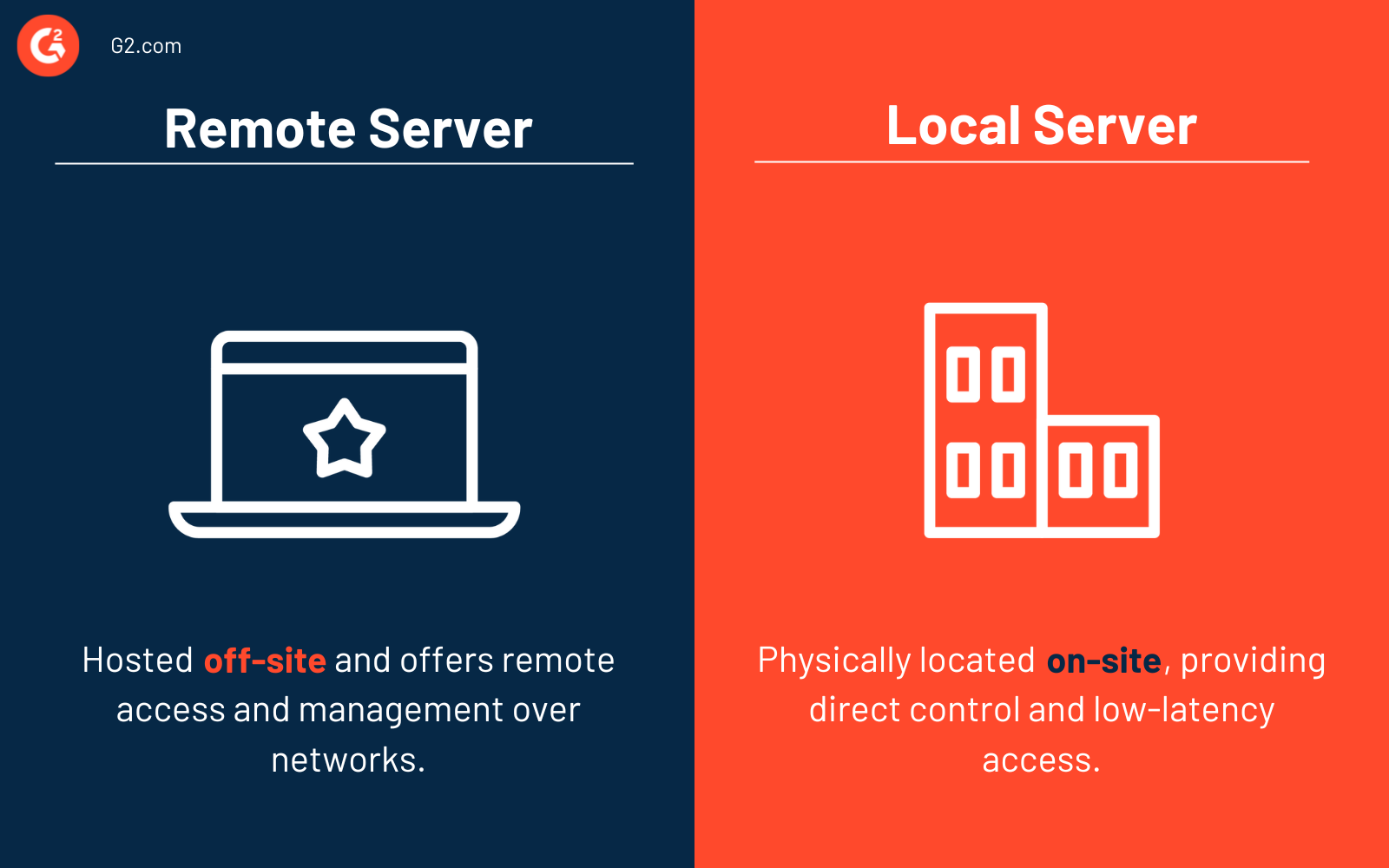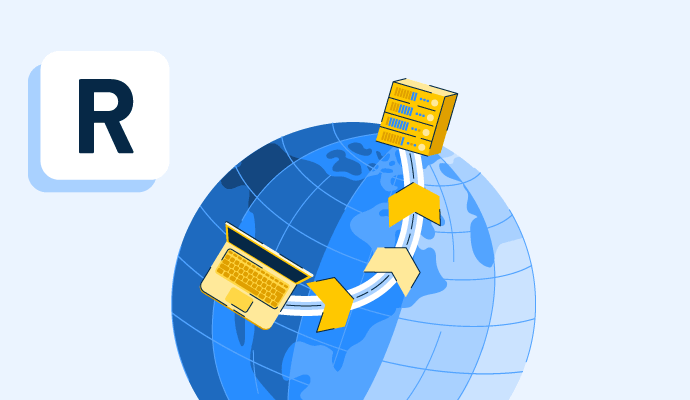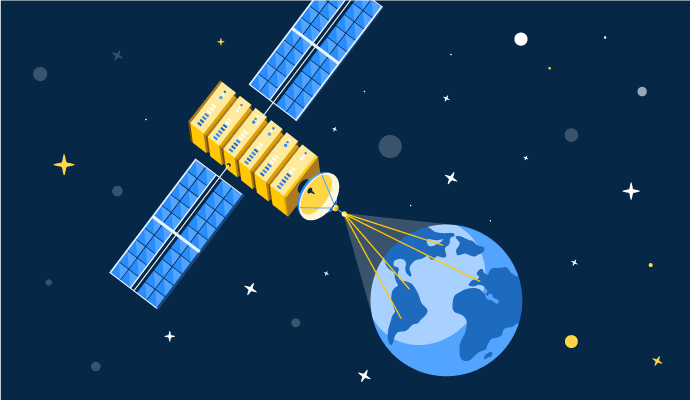What is a remote server?
A remote server connects users to their computer systems when they’re not in the same place. It helps people connect to an organization’s internal server without being on the company’s local area network.
Businesses often use remote servers to save costs. They minimize setup costs for physical infrastructures and their maintenance. Due to the easy scalability of remote servers, organizations can adjust server resources such as central processing units (CPUs), random access memory (RAM), and storage as per their need.
Many companies like to use server virtualization software, also known as hypervisors, to partition dedicated servers into scalable virtual instances. It helps optimize workload and resource allocation.
Types of remote servers
Each type of server provides distinct purposes and offers unique advantages. Below are some common remote server types.
- The Windows server runs the Windows operating system (OS). Though not an open source, organizations generally prefer Windows servers due to their user-friendly interface and compatibility with numerous software platforms.
- The Linux server operates on a Linux OS, such as CentOS or Ubuntu. Due to its open-source nature, Linux servers are widely used for cloud computing. Linux, Apache, MySQL, and Hypertext Preprocessor (PHP) (LAMP). LAMP stack applications are normally hosted on Linux servers
- The Unix server runs a version of Unix (an OS developed as an alternative to Linux). It supports multitasking and multiple users. Academic institutions and businesses prefer it.
- Mainframe servers carry out complicated activities involving vast chunks of data. Large enterprises, including telecommunication firms and financial institutions, commonly rely on these servers due to their robust and highly reliable performance.
Remote server access methods
Understanding the methods for remote server access is essential for effective management and data handling. The following are some standard methods common among professionals.
- Secure shell (SSH) is a safe way of accessing a server's command line. This is usually for Linux and macOS servers.
- Remote desktop protocol (RDP), mainly used for Windows servers, provides a graphical interface to remotely control systems.
- File transfer protocol (FTP) moves files between a local machine and a server. Secure FTP (SFTP) is its secure version.
- A virtual private network (VPN) creates a secure connection to a network, giving access to the server as if the user is on the local network.
- Telnet is an older method, a little less secure than SSH, used for command line access.
- Web-based control panels provide a web interface to manage server functions.
- Virtual network computing (VNC) offers graphical desktop-sharing features. It’s similar to RDP, but used for different kinds of systems.
- Direct console access gives physical access to the server, usually in a data center, with a keyboard, mouse, and monitor.
Capabilities of remote server management systems
A remote server management system gives users the tools to efficiently manage and administer servers in remote or distributed environments.
Some of the critical capabilities and features are:
- Managing health and performance. Administrators can oversee server health and performance, including monitoring CPU usage, memory utilization, disk space, and network activity.
- Configuring accounts and security. Admins create, modify, or delete user accounts on remote servers, setting permissions and access rights. A remote server management system also provides tools to configure security settings such as firewall rules and encryption.
- Minimizing vulnerabilities. The remote server management system ensures servers run the latest applications and security patches. This capability reduces vulnerabilities, enhances server performance, and supports ongoing software maintenance.
- Centralizing control and automation. Teams manage multiple remote servers from a single console, simplifying work procedures and increasing efficiency. A remote server management system also supports scripting and automation, allowing administrators to automate repetitive tasks and create custom management scripts.
Remote server management implementation process
Organizations can establish remote server management systems by following the steps below.
- Decide. Consider the choices available and identify the systems that best support users' needs.
- Prepare. Set up the infrastructure to apply the remote management solution.
- Deploy. Install and configure multiple systems using predefined templates after completing all the prerequisites.
- Integrate. Include the existing management tools, procedures, and workflows. Sync them with the remote server solution.
- Roll out. Create accounts for users and instruct them about utilizing the system after successful deployment.
Remote server protection best practices
Remote server protection is crucial as it helps maintain data confidentiality, integrity, and availability on remote servers. Follow these best practices to ensure security.
- Use firewalls. Implement a solid firewall to filter the network traffic. This helps block unauthorized access and potential threats.
- Leverage SSH key authentication. Use SSH keys instead of passcodes. This adds an extra layer of protection, as keys are more challenging to crack.
- Update regularly. Keep the server's OS and software updated. Outdated software is vulnerable to exploits.
- Use strong password policies. Enforce strong password policies. Every user should choose a complex passcode that they change regularly.
- Deploy an intrusion detection and prevention system (IDS). Use it to monitor network traffic for suspicious activities. Optimize it to alert the user in case of potential security breaches.
- Adopt strict access control. Limit the number of users with remote access and grant only the necessary permissions.
- Encrypt data. Use hypertext transfer protocol secure (HTTPS) to encrypt data in transit.
- Segment the network. Segregate the server into different network segments to limit the impact of any breach. Use a demilitarized zone (DMZ) for publicly accessible services.
Remote server vs. local server
It's common to confuse a remote server with a local server, but the two have key differences.

Remote servers are hosted off-site and offer remote access and management over networks. They are maintained by third-party providers, offering scalability and accessibility from anywhere. However, they involve recurring costs and reliance on security providers.
Local servers are physically located on-site, for direct control and low-latency access. They need hardware investments, regular maintenance, and security.
Learn more about intrusion detection systems (IDS) and understand why they matter for remote server security.

Sagar Joshi
Sagar Joshi is a former content marketing specialist at G2 in India. He is an engineer with a keen interest in data analytics and cybersecurity. He writes about topics related to them. You can find him reading books, learning a new language, or playing pool in his free time.

